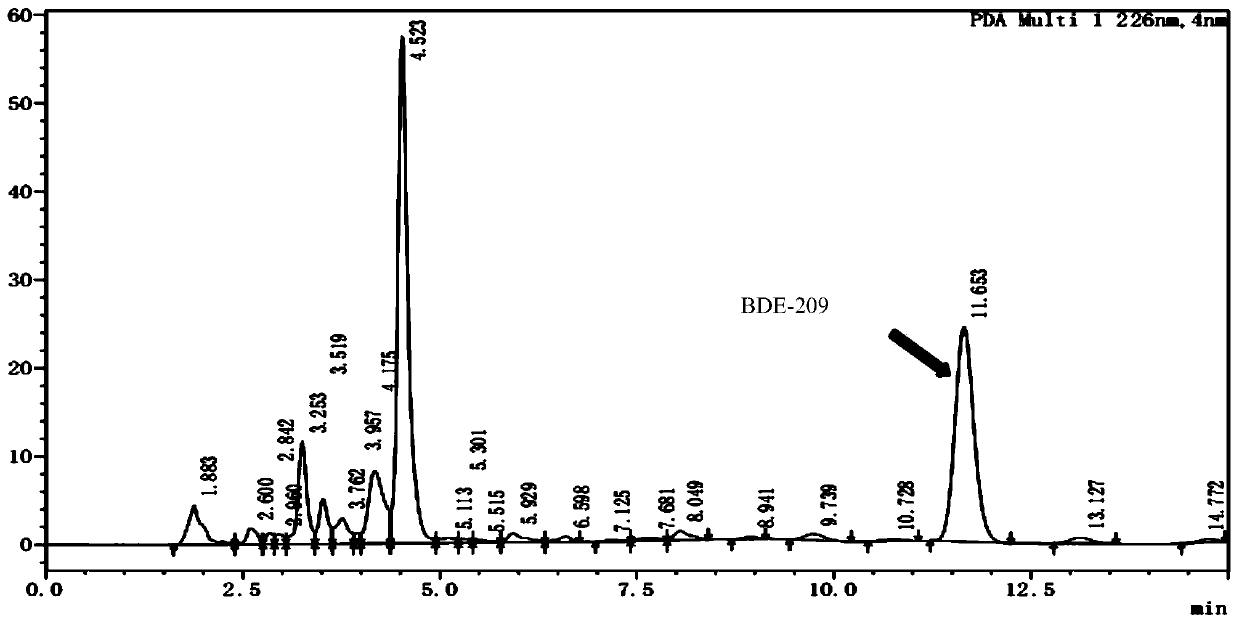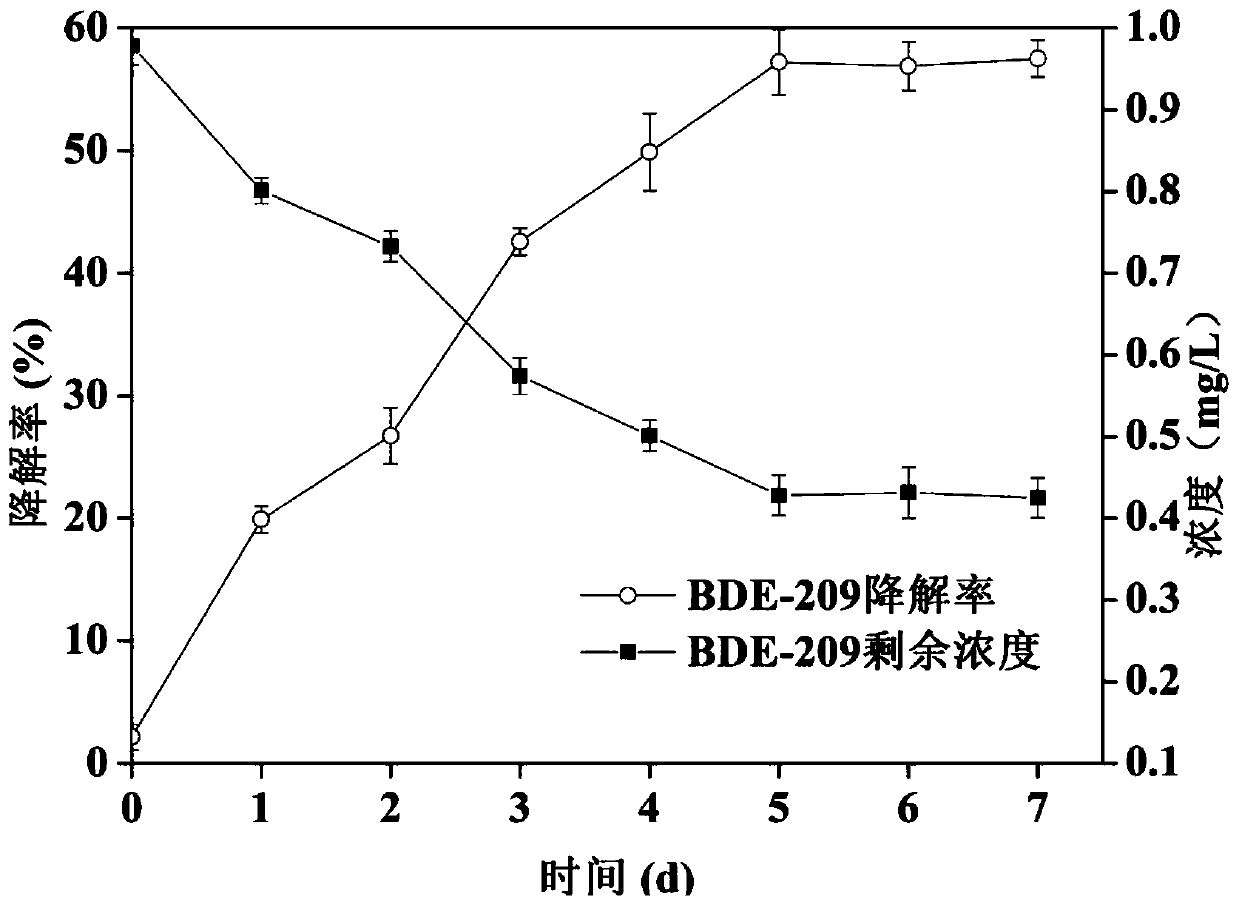Microbacterium capable of degrading decabromodiphenyl ether as well as domestication method and application thereof
A decabromodiphenyl ether and microbacteria technology, which is applied in chemical instruments and methods, microorganism-based methods, and methods using microorganisms, etc., can solve the problems of lack of effective degrading bacteria, low efficiency, etc., and achieves low cost and degradation. Good effect and strong environmental adaptability
- Summary
- Abstract
- Description
- Claims
- Application Information
AI Technical Summary
Problems solved by technology
Method used
Image
Examples
Embodiment 1
[0045] 1. Domestication and screening of degrading strains
[0046] (1) Add the decabromodiphenyl ether-contaminated soil to 20 mL of inorganic salt medium (sterilized), and cultivate it in a constant temperature shaker with a temperature of 30 ° C and a rotation speed of 160 rpm for 4 hours, and then take it out. Stand still to obtain a supernatant, which is used as an inoculum to continue acclimatization. Each liter of inorganic salt medium includes: 1g / L (NH4) 2 SO 4 , 1.5g / L KH 2 PO 4 , 3g / LK 2 HPO 4 , 2mL / L trace element solution, 1000mL distilled water, pH 7.0.
[0047] The trace element solution is a solution obtained by adding trace element compounds into water and mixing them evenly; in the trace element solution, the concentration of each substance is: MgSO 4 The concentration is 4.2g / L, ZnSO 4 The concentration is 4.2g / L, CuSO 4 The concentration is 1.2g / L, MnSO 4 The concentration is 1.2g / L, FeSO 4 ·7H 2 The concentration of O is 1.2g / L and CaCl 2 The ...
Embodiment 2
[0056] Example 2 Degradation Analysis of Microbacteria to Decabromodiphenyl Ether (Effect Verification)
[0057] Microbacterium sp was inoculated into a 1000mL Erlenmeyer flask containing 500mL of sterilized enrichment medium, placed in a constant temperature shaker at a temperature of 30°C and a rotation speed of 160rpm, and cultured for 36 hours to obtain enriched cultured bacteria. Liquid; the enrichment medium (in terms of one liter volume) contains: 3g / L beef extract, 10g / L peptone, 5g / L NaCl, 1000mL distilled water, pH 7.0.
[0058] Place the enriched cultured bacterial solution (20mL) in a 50mL sterilized centrifuge tube, centrifuge at 8000g for 7min, collect the bacteria, wash repeatedly with sterile normal saline and centrifuge for 3 times, and finally add normal saline to make a certain concentration (OD 600 =0.6) of the bacterial suspension, 1mL of the configured bacterial suspension was added to 19mL of sterilized degradation medium (decabromodiphenyl ether degrad...
Embodiment 3
[0070]Example 3 is the same as Example 2, except that in the degradation experiment, the pH of the degradation medium is 7.0, and the culture conditions are as follows: the temperature is 20°C, 25°C, 30°C, 35°C and 40°C, the rotating speed of the shaker is 160rpm, and the culture time for 7d. Finally, the degradation rates of decabromodiphenyl ether by microbacteria were 27.5%, 40.6%, 57.6%, 55.1% and 49.8%. The degradation effect of embodiment 3 is similar to embodiment 2, can refer to figure 2 .
PUM
| Property | Measurement | Unit |
|---|---|---|
| Wavelength | aaaaa | aaaaa |
Abstract
Description
Claims
Application Information
 Login to View More
Login to View More - R&D
- Intellectual Property
- Life Sciences
- Materials
- Tech Scout
- Unparalleled Data Quality
- Higher Quality Content
- 60% Fewer Hallucinations
Browse by: Latest US Patents, China's latest patents, Technical Efficacy Thesaurus, Application Domain, Technology Topic, Popular Technical Reports.
© 2025 PatSnap. All rights reserved.Legal|Privacy policy|Modern Slavery Act Transparency Statement|Sitemap|About US| Contact US: help@patsnap.com


